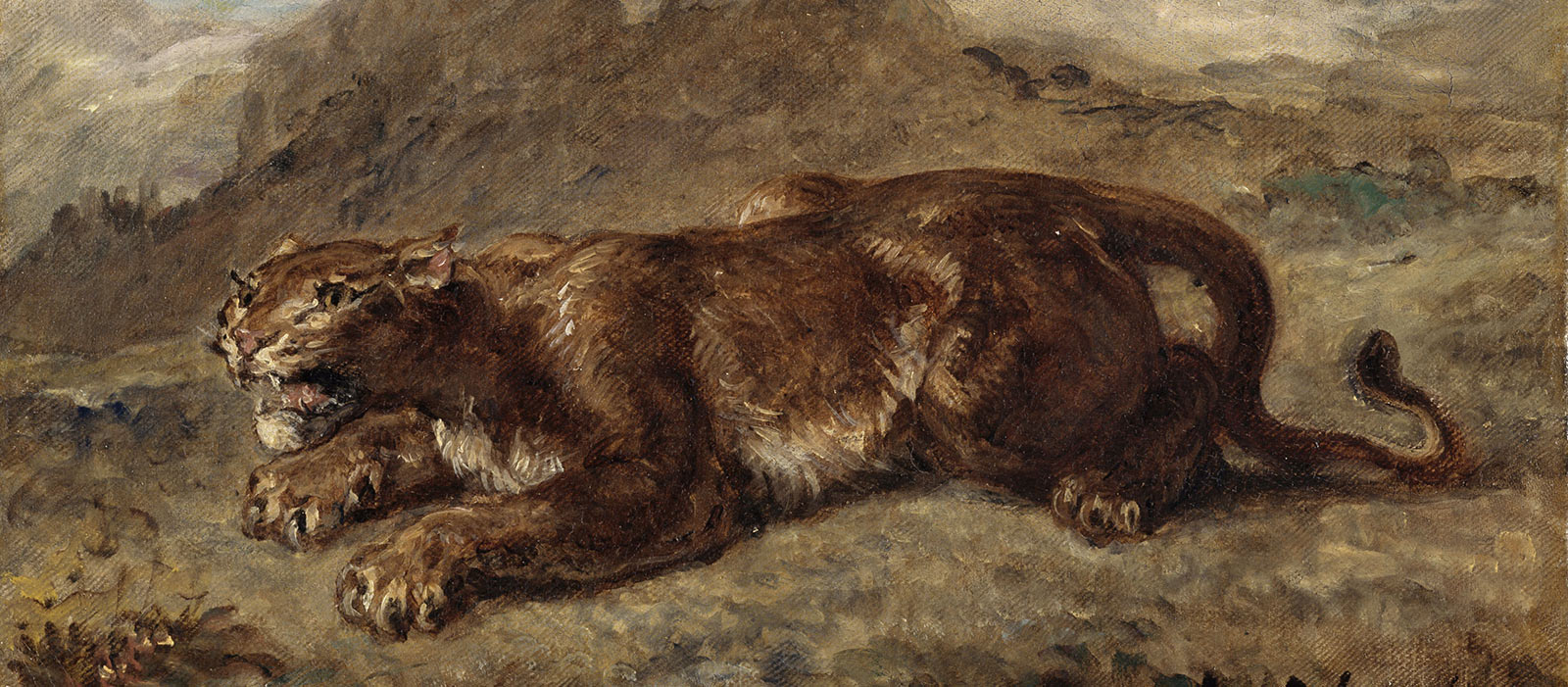What’s on
The animals have slipped out ! For its 20th anniversary the Grande Galerie de l’Evolution has broken into the Musée Eugène-Delacroix
from September 17, 2014 to January 5, 2015
A lioness in Eugène Delacroix’s studio, Musée National Eugène Delacroix.
“The lion is dead. At the double. The weather we are having must stir us. I’ll be waiting for you there”; this brief note that Delacroix sent on 19th June 1829 to his animal sculptor friend Louis-Antoine Barye, shows what a state of excitement the painter was in when studying big cats. We know that the painter could spend hours watching the lions and tigers pacing back and forth behind the bars of their cages in the menagerie at the Jardin des Plantes, and never missed an opportunity to watch an animal being dissected at the comparative anatomy laboratory then headed by the renowned Georges Cuvier. Right up until the final years of his life, despite his frail health, Delacroix kept up his visits to the Jardin des Plantes, to make copies “in the sunshine among the crowd, after the lions”. Certainly, big cats enjoy pride of place in Delacroix’s bestiary; many writers have seen this as a personalization of the artist himself, of the wild, proud side to him.
Here is something he wrote in his Journal on 19th January 1847, underlining how much his interest in naturalism ties in with his admiration for the pictorial tradition, notably that of Peter Paul Rubens:
“The Natural History Museum is open to the public on Tuesdays and Fridays. Elephants rhinoceroses, hippopotamuses; extraordinary animals! Rubens rendered them marvellously. I had a feeling of happiness as soon as I entered the place and the further I went the stronger it grew. I felt my whole being rise above commonplaces and trivialities and the petty worries of my daily life. What an immense variety of animals and species of different shapes and functions! (…) Tigers, panthers, jaguars, lions, etc. Why is it that these things have stirred me so much? Can it be because I have gone outside the everyday thoughts that are my world; away from the street that is my entire universe? How necessary it is to give oneself a shake from time to time; to stick one’s head out of doors and try to read from the book of life that has nothing in common with cities and the works of man.”


